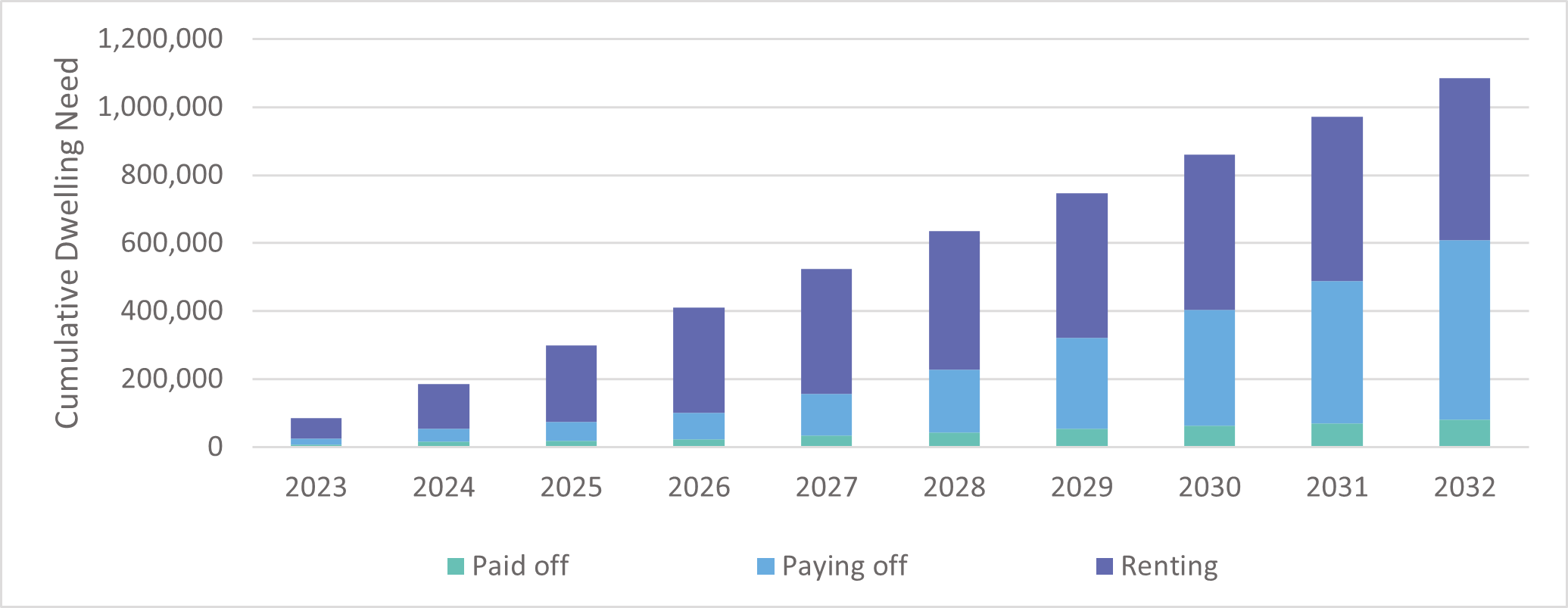International migration is forecast to bounce back to 195,000 migrants in 2023. Here’s a quick look at how new arrivals will interact with the housing market.
Migrants typically rent (70%) when they first arrive in Australia. Within 9-years of arriving in Australia, they are more likely to be homeowners (56%) than renters (44%).
Migrant Tenure Over Time, Australia
Source: ABS
Click to enlarge.
This translates to an immediate need for 53,000 rental dwellings this year and by 2031 a total of 425,000 rental dwellings to house new residents. This is based on net overseas migration gradually returning to the 2019 level by 2025 and maintaining that level to 2032.
With vacancy rates across our major cities already below long-term averages, this presents a significant opportunity for investors and a real challenge for policy makers.


